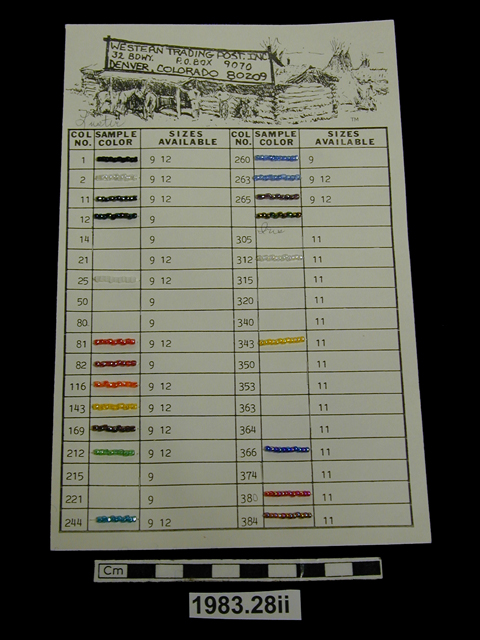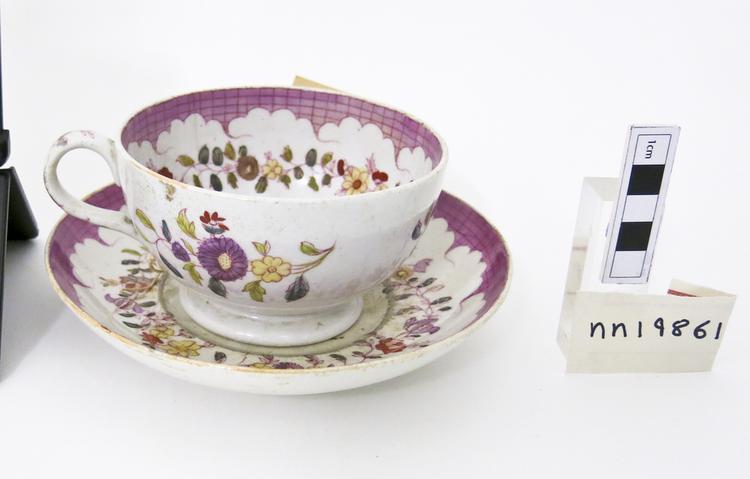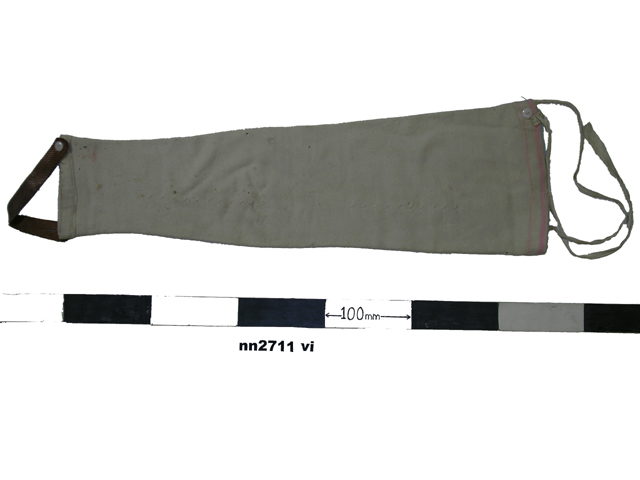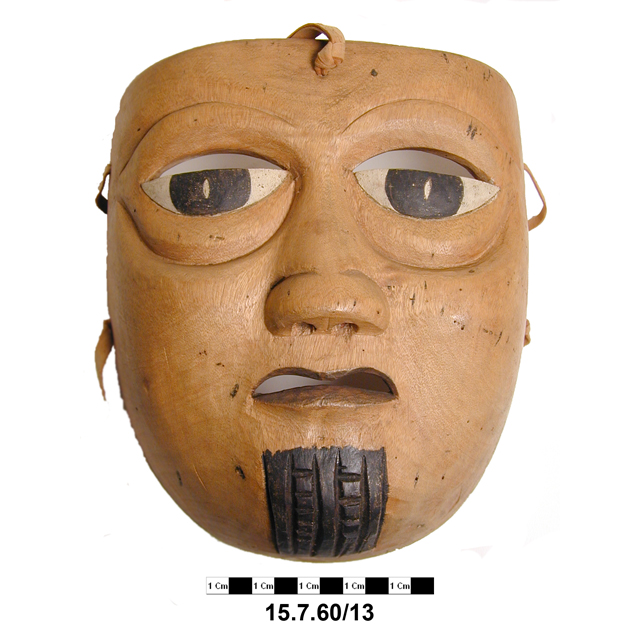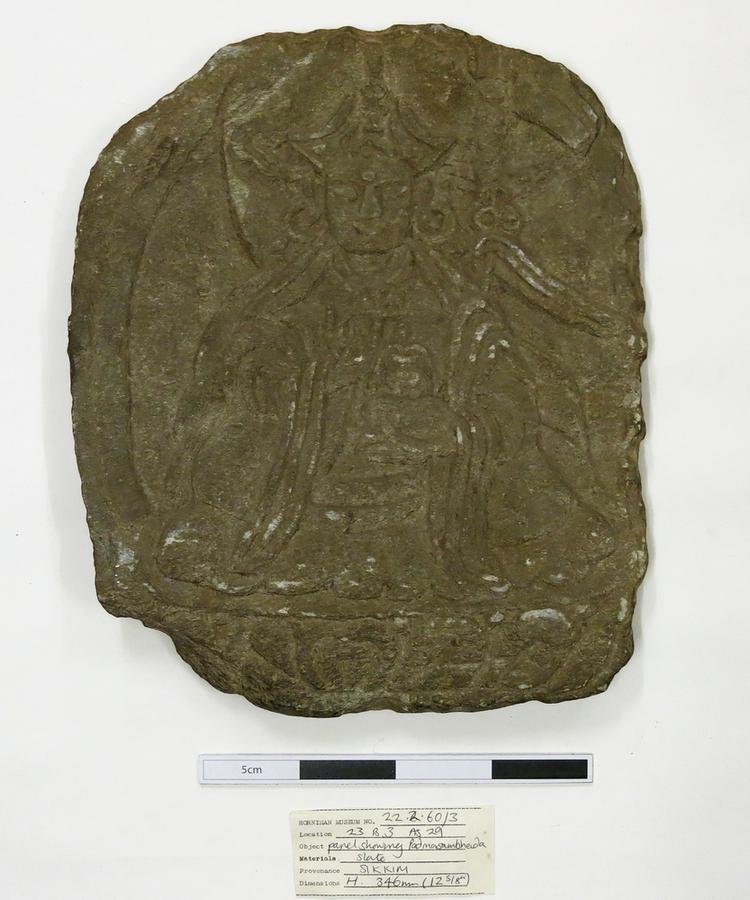

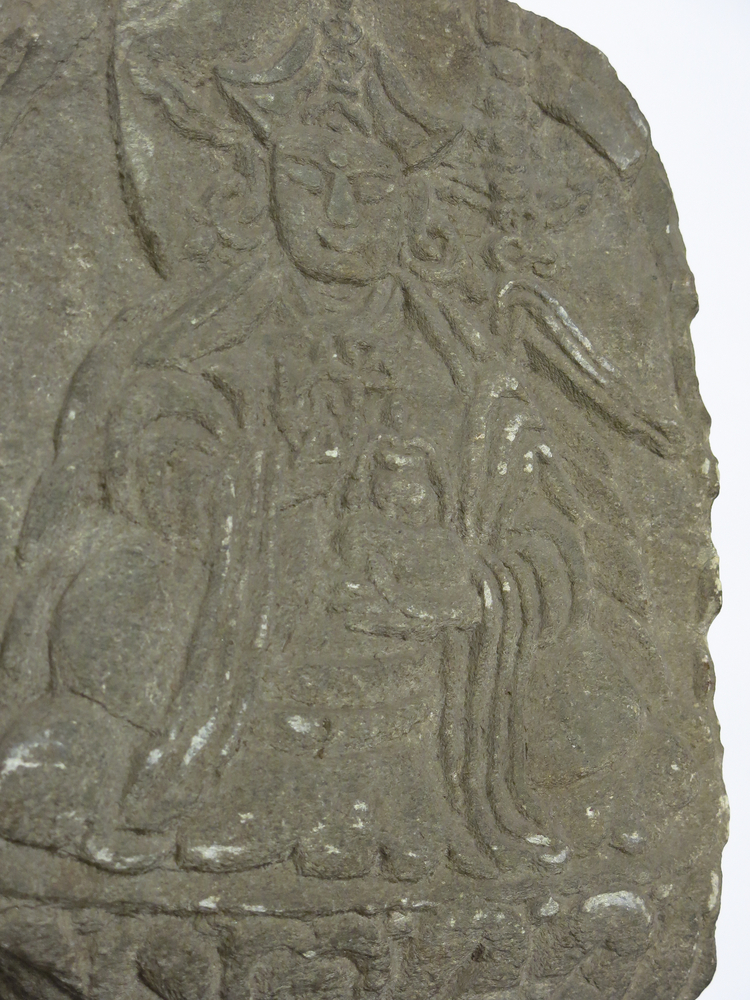

Slate tablet with relief of Padmasambhava seated on a lotus throne. He is surrounded by a quasi circular aureole which extends behind a flat halo surrounding his head. He holds a vajra in his right hand, raised at his heart and in his left a skull-cup brimming with nectar, containing the vase of longevity that is also filled with the nectar of deathless wisdom and ornamented on top by a wish-fulfilling tree. Tucked under his right arm is the khaṭvāńga staff, an attribute which is intrinsic to the iconographic representation of Padmasambhava.
The reverse of the tablet bears the mantra OM AH HUNG (Body, Speech, Mind) carved in relief. When thangkas undergo the process of rapney or consecration OM AH HUNG is written on the back of the canvas behind the figures depicted. Through this process the image on the thangka becomes the deity it depicts, giving the devotee direct access to the deity.
Slate tablet with relief of Padmasambhava seated on a lotus throne. He is surrounded by a quasi circular aureole which extends behind a flat halo surrounding his head. He holds a vajra in his right hand, raised at his heart and in his left a skull-cup brimming with nectar, containing the vase of longevity that is also filled with the nectar of deathless wisdom and ornamented on top by a wish-fulfilling tree. Tucked under his right arm is the khaṭvāńga staff, an attribute which is intrinsic to the iconographic representation of Padmasambhava. The reverse of the tablet bears the mantra OM AH HUNG (Body, Speech, Mind) carved in relief. When thangkas undergo the process of rapney or consecration OM AH HUNG is written on the back of the canvas behind the figures depicted. Through this process the image on the thangka becomes the deity it depicts, giving the devotee direct access to the deity.



